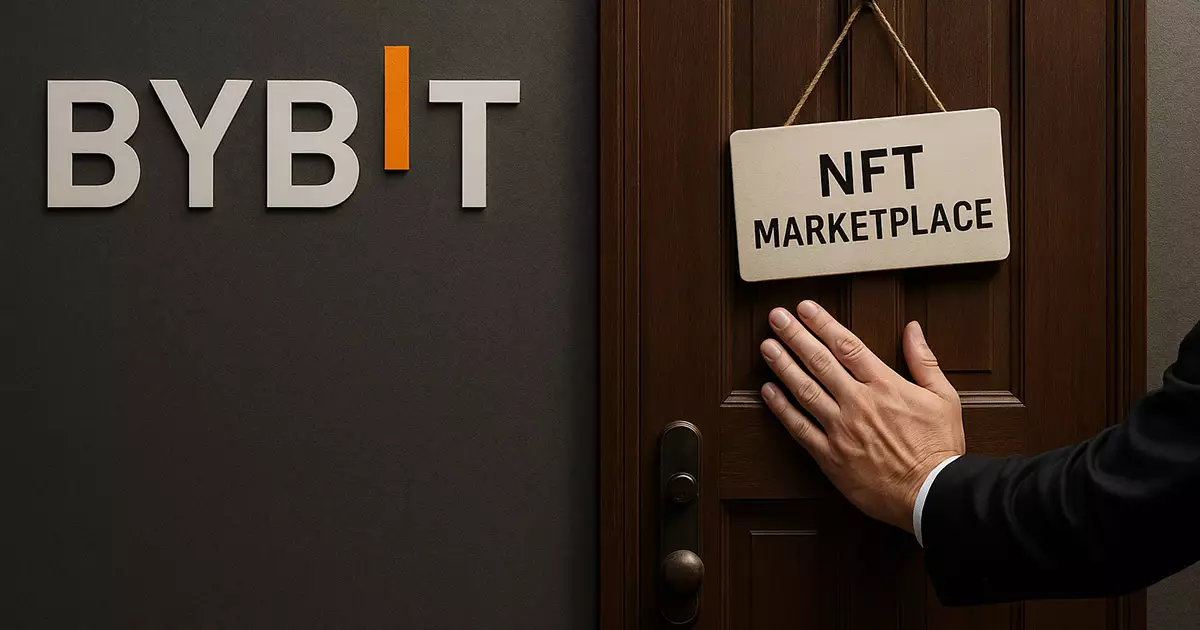The cryptocurrency and NFT landscape has undergone a vast transformation over the past two years. Bybit’s announcement to shut down its NFT Marketplace, along with other services like the Inscription Marketplace and IDO product pages, serves as a powerful indicator of a far-reaching decline in interest and activity. This isn’t merely a platform issue; it’s a symptom of a much larger malaise impacting the NFT sector. Once hyped as revolutionary, digital collectibles are now struggling to attract users, with a staggering 95% drop in trading volumes for top collections since their peak in 2021. Investors have begun to recognize that the ephemeral excitement surrounding these tokens does not equate to long-term value—a bitter pill for many who ventured in relying on hype alone.
Regulatory and Security Concerns
The troubling backdrop of Bybit’s closure is compounded by increased scrutiny and security threats facing cryptocurrency exchanges. Following a significant breach resulting in the loss of $1.4 billion linked to North Korean hackers, the exchange is under immense pressure to reassess its operational focus. This incident highlights critical vulnerabilities inherent in the blockchain ecosystem. When platforms like Bybit and Kraken shutter their NFT operations, it isn’t just an economic decision; it’s also a response to growing regulatory concerns about security and consumer protection. For a sector already struggling with trust, these moves amplify doubts surrounding not just NFTs but the platforms facilitating their trading.
Changing Market Dynamics
The NFT landscape has shifted dramatically, leading some to question whether these digital assets were ever more than a fad. As institutional interest evaporates, platforms that once thrived on innovative products are forced to streamline their offerings. As seen in Bybit’s case, the decision to pause NFT trading is emblematic of a broader corporate strategy reacting to fluctuating market dynamics. Notably, even previously vibrant NFT projects like Bored Ape Yacht Club have faced significant declines in trading volumes. The only exceptions seem to be niche collections, like Pudgy Penguins and Doodles, whose unique branding and partnerships have allowed them to weather the storm. However, such anomalies are rare and raise questions about the sustainability of the NFT model.
The Reality Check for NFT Enthusiasts
For those who still cling to the dream of digital ownership through NFTs, Bybit’s closure should serve as a sobering reality check. The data doesn’t lie—total NFT sales fell to $1.5 billion in Q1, a drastic decline from $4.1 billion the previous year, signifying a 63% year-over-year decrease. Moreover, the prevalence of active wallets participating in NFT trades has plummeted from over half a million to fewer than 20,000. The overwhelming sentiment among serious investors is shifting toward skepticism, driven by tangible evidence that the previous fervor may have been overly speculative.
A Call for Thoughtful Innovation
As an evolution of the digital economy, NFTs have a critical role to play, assuming they can learn from these substantial missteps. Bybit’s retreat should inspire a more sustainable approach to innovation within the sector. A future devoid of hype-driven assets needs transparency, security, and practicality. Only then can NFTs potentially reclaim their position as transformative assets rather than relics of a speculative past. The unfortunate truth is that the current trajectory of NFT marketplaces is akin to walking a tightrope without a safety net—one that may soon lead to collapse unless substantial changes are made.

